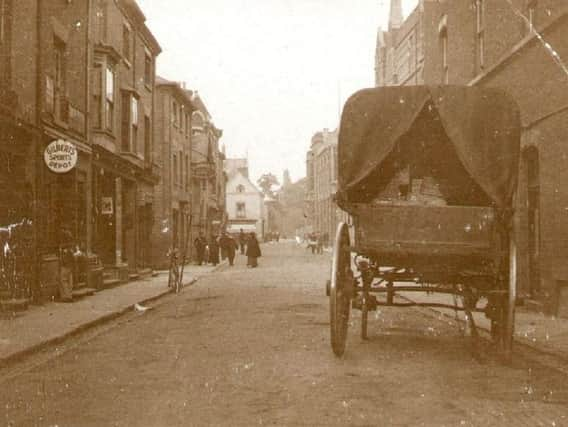'The era of horses and carts would soon give way' - how aviation history was made in a field near Lutterworth


Many readers of a certain age will undoubtedly remember that long-lost era when the roads in and around Rugby were relatively free from motorised traffic and therefore a lot safer for cyclists.
Back then, nearly everyone owned a bicycle, as anyone who ever made the mistake of getting caught up in the nightly Mill Road mass exodus from the BTH works might confirm.
Advertisement
Hide AdAdvertisement
Hide Ad“Make sure you miss the BTH crowd!” was once a familiar bit of sound advice to riders and drivers throughout Rugby.
A pair of pedals was also the key to freedom during people’s leisure time, and that’s why the all-too brief period of the 1950s and early 60s could arguably be termed the last days of the bike ride.
My late father and I would regularly go on ‘bike rides’ from Churchover, mainly to neighbouring villages such as Harborough Magna, Easenhall, Pailton and Brinklow.
But sometimes, we would venture further, cross the county border into Leicestershire… and visit Stanford Hall, near Lutterworth.
Advertisement
Hide AdAdvertisement
Hide AdJust outside this stately pile, the nearby River Avon had been dammed at some stage, creating an artificial lake. This was perfect for small boys like me, who with rod and line, might angle for perch, gudgeon or roach.
Stanford Hall, however, has a much greater claim to fame. And that’s because it was the setting for the first attempt at powered flight of an aircraft, an event that – had it happened – would certainly have predated the famous Wright brothers’ achievement in 1903 at Kitty Hawk, North Carolina, by several years.
Percy Pilcher was born in Bath in 1867, and served in the Royal Navy for seven years from 1880. He later became an apprentice with a firm of Glasgow shipbuilders.
In 1891, Pilcher began work as assistant lecturer at Glasgow University and started to take a growing interest in aviation. He built a hang glider called ‘The Bat’ which he flew for the first time in 1895.
Advertisement
Hide AdAdvertisement
Hide AdLater that year, Pilcher met a man called Otto Lilienthal, who was the leading expert in gliding in Germany. These discussions led to Pilcher building two more gliders and, based on the work of Lilienthal, in 1897 built a glider called ‘The Hawk’ with which he broke the world distance record when he flew a distance of 820 feet in the grounds at Stanford Hall.
His sister Ella Pilcher was involved with his work, stitching the fabric wings of his planes and assisting with his experiments and test flights.
She appears in photos taken at the time of Pilcher’s public flights. Spurred on by his success, Pilcher now planned to make powered flights.
He developed a triplane that was to include a four horsepower engine, but this led to him getting heavily into debt.
Advertisement
Hide AdAdvertisement
Hide AdUndeterred, Pilcher sought sponsorship, and this led to him forming a company with Walter Gordon Wilson, who would go on be the co-inventor of the tank, which first saw action during the First World War at Cambrai on the Western Front in 1917.
On September 30, 1899, having completed his triplane, he decided to demonstrate it to a group of onlookers and potential sponsors in a field near Stanford Hall.
However, days before, the engine crankshaft had broken and, so as not to disappoint his guests, he decided to fly a glider instead. The weather was stormy and rainy, but by 4pm, Pilcher decided the weather was good enough to fly.
But it was then that tragedy struck. After a few seconds airborne, the tail snapped, and Pilcher plunged 30 feet to the ground. He died two days later from his injuries, with his triplane having never been publicly flown.
He is buried in Brompton Cemetery, west London.
Advertisement
Hide AdAdvertisement
Hide AdA stone monument to him stands in the field near Stanford Hall at the point where he crashed, and a full-sized replica of his glider is also displayed at the Hall.
The original Hawk has survived and is in the collections of National Museums Scotland. In 2011, he was one of seven inaugural inductees to the Scottish Engineering Hall of Fame.
Pilcher was certainly a trailblazer in the realms of pioneering aircraft design, because at the time of his death, he was trying to design a wing that could lift the weight of an engine, the aircraft itself, and the occupant.
A monument to Percy Pilcher is located at Upper Austin Lodge to the south of Eynsford, Kent. He regularly flew his glider from this location.
Advertisement
Hide AdAdvertisement
Hide AdToday, visitors can still see, as my late father and I did all those years ago, the monument to this courageous aviation pioneer, standing in a field not far from Stanford Hall.
It’s worth viewing, because in many ways, it was the work of this man that made possible the universal jet travel that – before the Covid pandemic grounded flights - we all once took for granted.
John Phillpott’s account of his days as a Rugby Advertiser reporter during the 1960s, titled Go and Make the Tea, Boy! is available from bookshops and also online